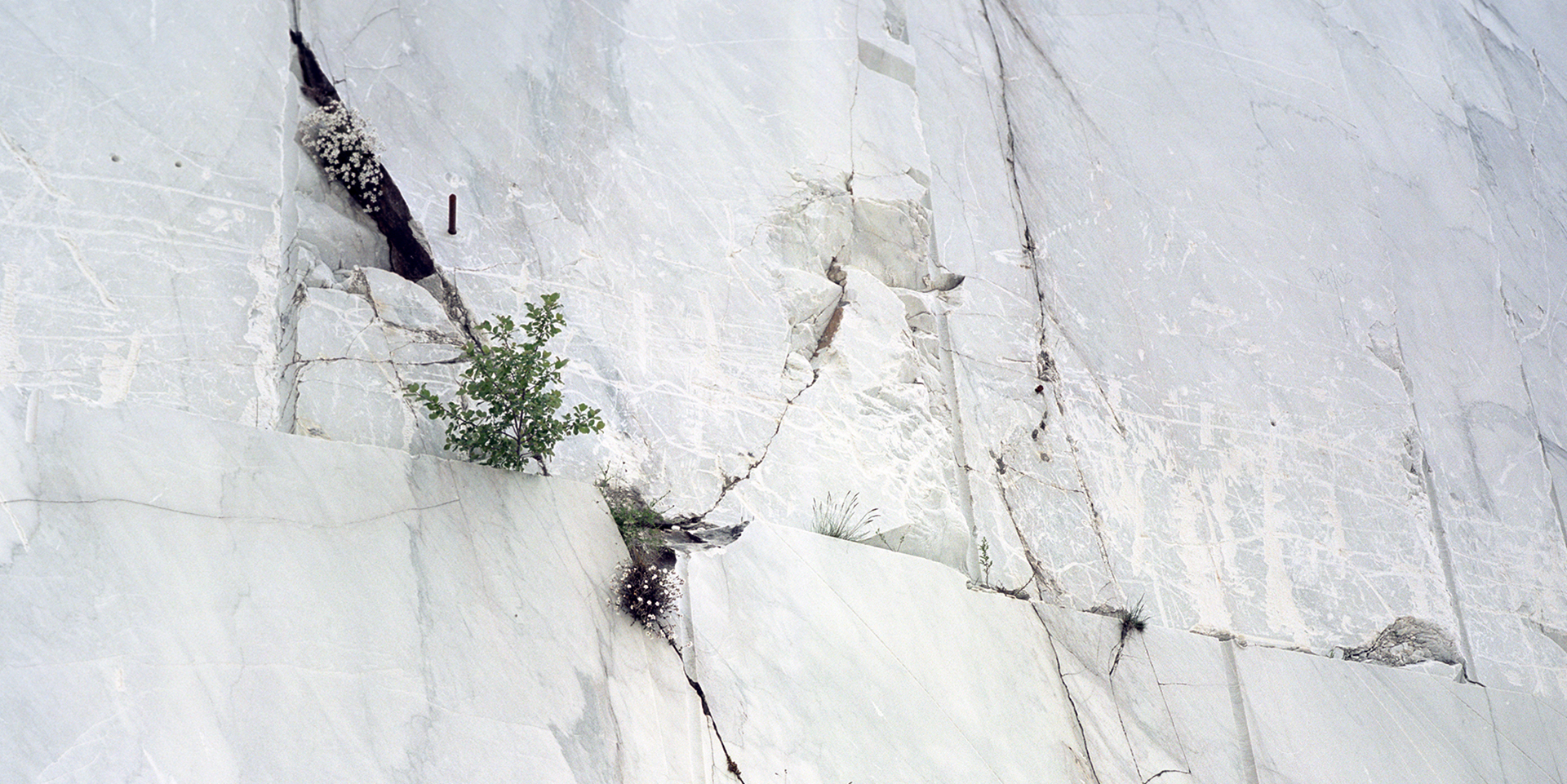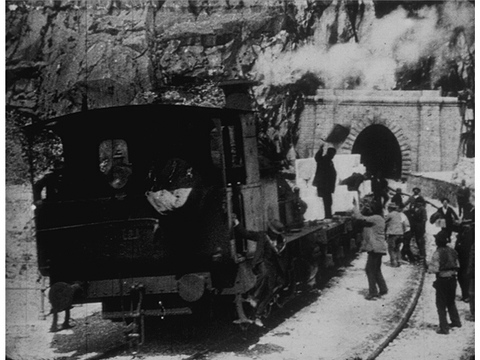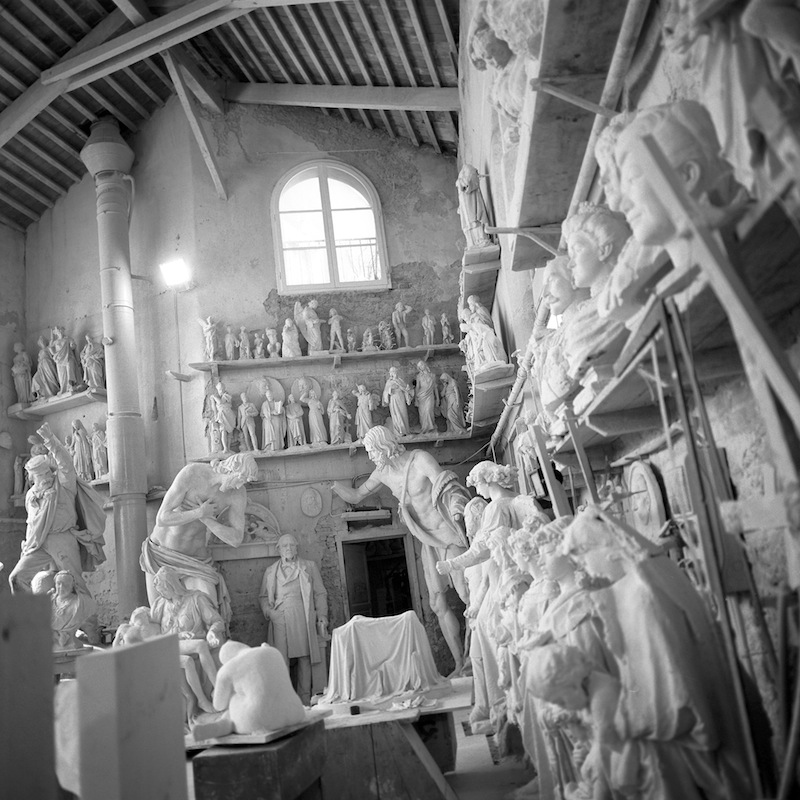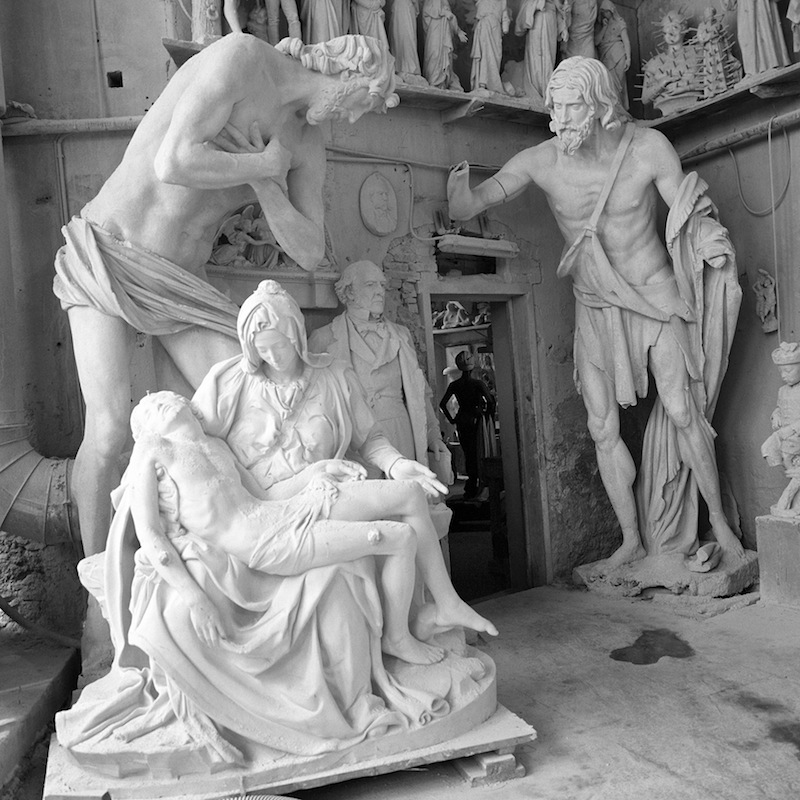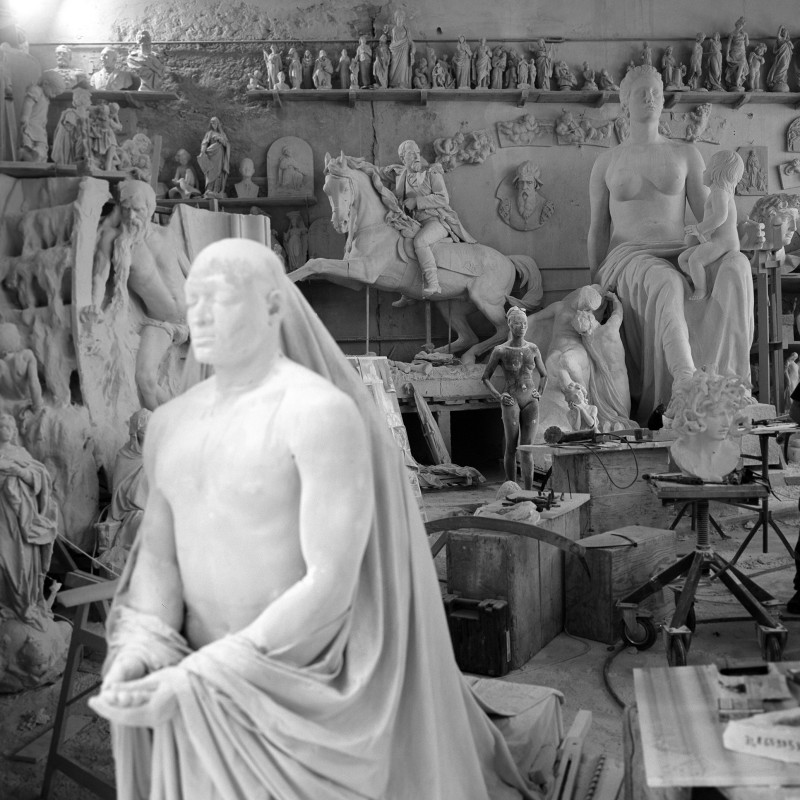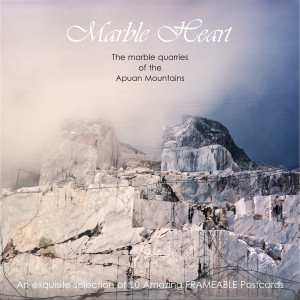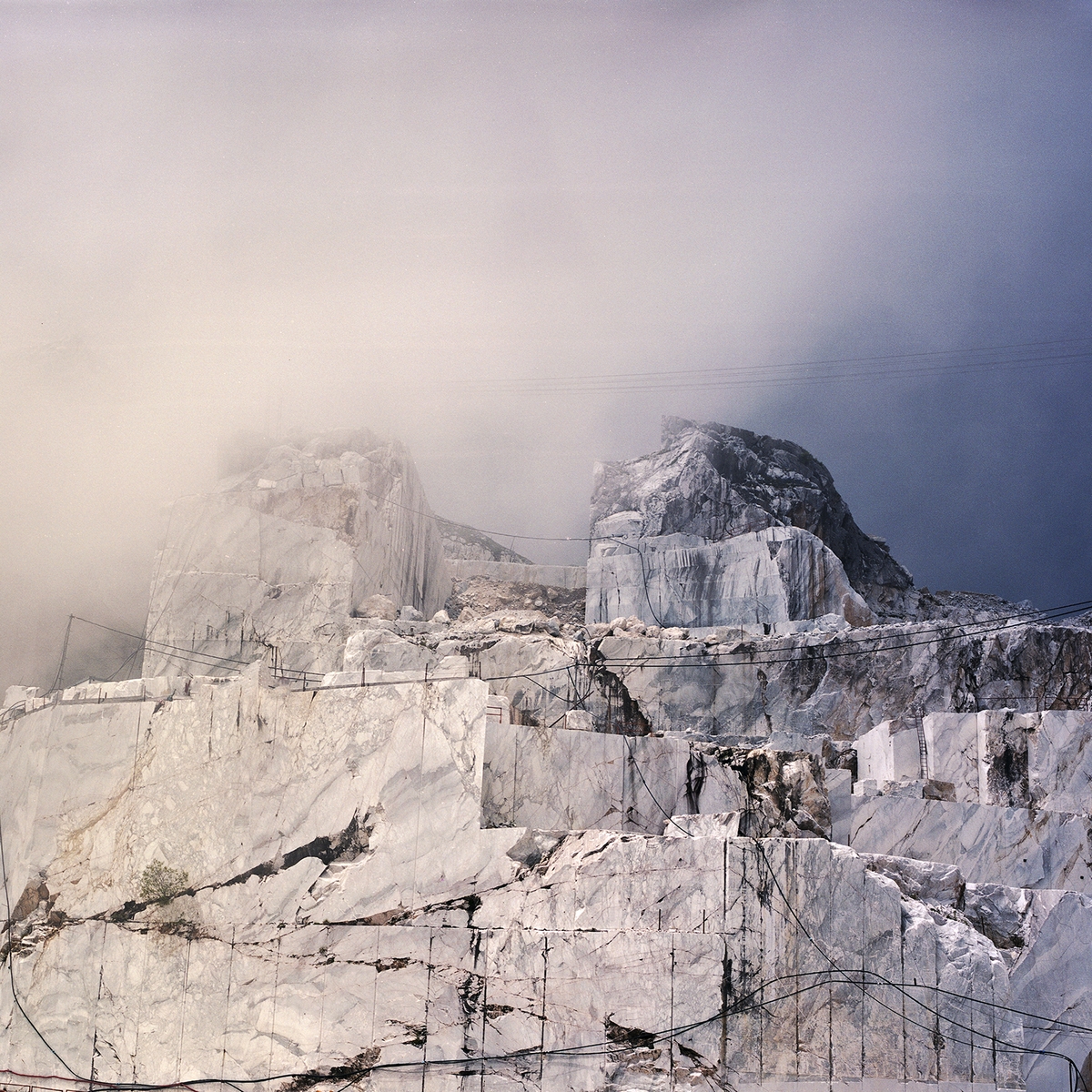
MARBLE HEART
The extraction of marble from the Apuan Alps in the Carrara region dates back from the first century AD when Romans extracted it under the name of “Marmor lunese”. Initially marble was extracted through primitive techniques, using gunpowder. 1890 was a revolutionary year, as the technique of cutting it with a helical thread began to be used; the technique had been invented 30 years earlier by a Belgian woman and presented at the 1889 World Exhibit in Paris. Since then quarries have developped tremendously, dramatically altering the landscape of the Apuan Alps, which, from a distance seem to be covered in snow – the view of the mountain’s marble heart, laid bare by human will and needs.
Some of the quarries are truly spectacular, the incredible, almost translucent white of the stone, perfectly cut, is shining in the sun evoking the Egyptian pyramids in their time of glory.
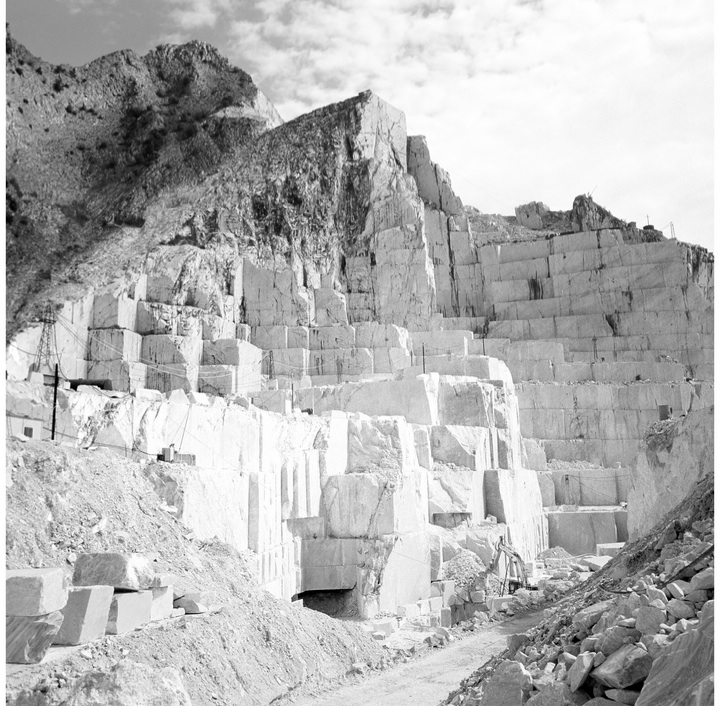
“Campanili” marble quarry – Photo courtesy of Successori Adolfo Corsi
The 22 kilometers-long railway that enabled the transportation of the blocks of marble to the workshops where they were cut, called “le segherie” was built between 1876 and 1890. One of the first films in the history of cinematography was filmed by the Lumiere brothers in this very place.
Currently there are around 190 quarries in the Carrara area, some of which are tourist attractions. It is difficult to describe in words what you feel seeing these extraction sites where giant machines tear up the mountain piece by piece, in a breathtaking landscape and in an almost solid tension. There is no room for errors, people here being accustomed to the danger as with the air they breathe. The marble blocks they steal from the mountain vary in colour from pure white to sublime nuances like “Bardiglio” or striped ones like “Arabescato”. The “bianco statuario” blocks of marble – the most appreciated marble that has very few mineral impurities – seem cubical eggs out of which talented craftsmen and artists have created over time invaluable masterpieces. A part of the marble ends up decorating sumptuous villas and Oriental palaces, another part is used on plazzas and monuments, yet another part is transformed into sculptures and the remaining pieces are used to craft all sorts of decorative or useful small objects. Even the smallest parts are useful. They are recomposed in synthetic plaques or are ground and sold on the stock exchange as plain calcium carbonate.
At Carrara, Seravezza and Pietra Santa, there are many Sculpture Studios, which have been working with world-wide most famous artists for centuries. Among them, Nicoli Sculpture Studio, founded by Carlo Nicoli in 1863, is one of the best and its amazing collection of sculptures has been recognized by Unesco, too.
In 1928, in the region called Canal Grande, in the Carbonera quarry, a unique and memorable event occured in the history of marble extraction in the Apuan Alps. Using the helical thread, a giant block of marble of impressive dimensions – 18 meters long and weighing over 300 tons – was removed from the quarry. The obelisk in the Mussolini Forum in Rome would emerge from this marble block called the “Monolith”. It took eight months and 30 pairs of oxen to transport the marble block to the harbor, where it was loaded on board of a ship using over 70,000 liters of soap to make it slide.
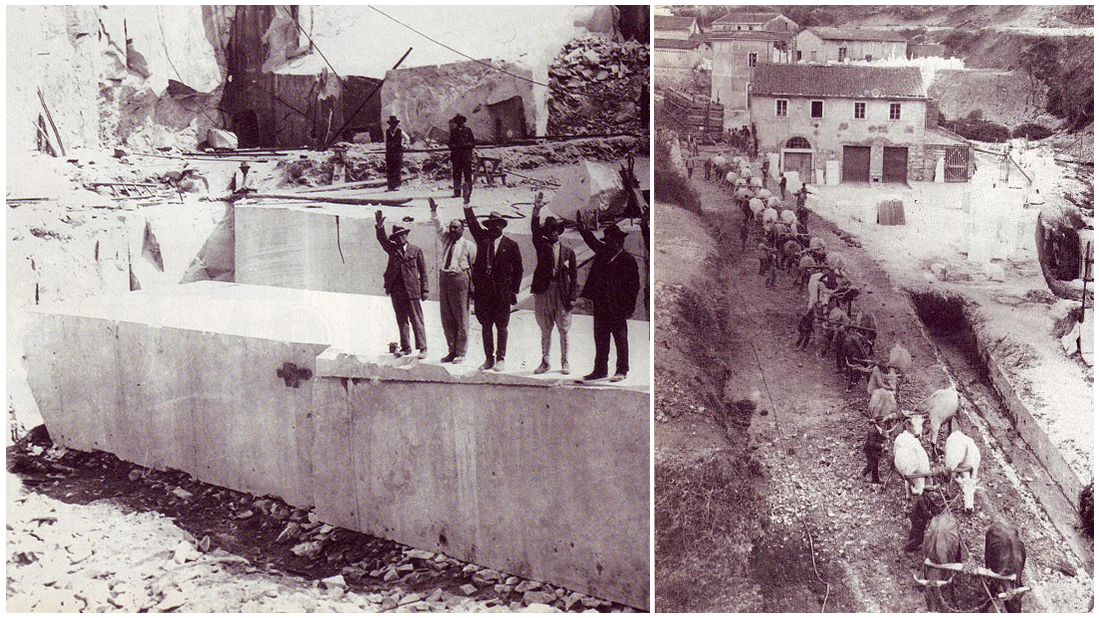
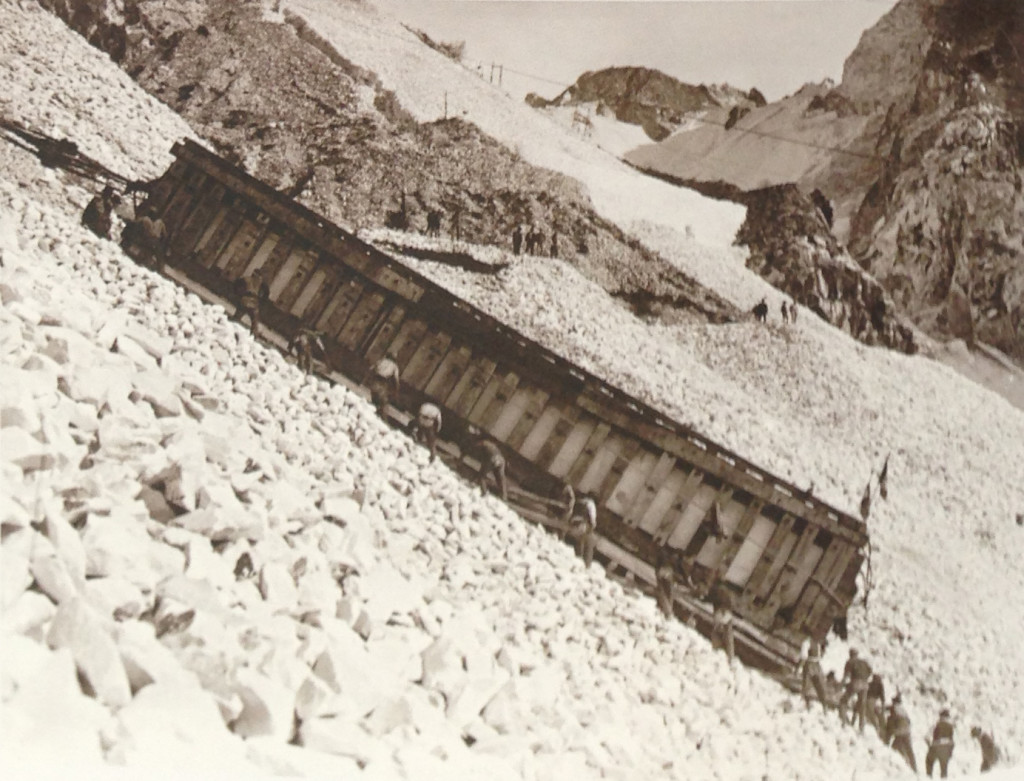
No story of the Carrara marble quarries can end without also paying homage to a local culinary wonder – “il lardo di Colonnata”, a specialty now included in the Ark of Taste catalog of heritage foods. The pork lard is kept in the marble caves covered in salt, black pepper, garlic and rosemary until transforming into a product of the same color as the marble and with an absolutely delightful taste and flavor.

